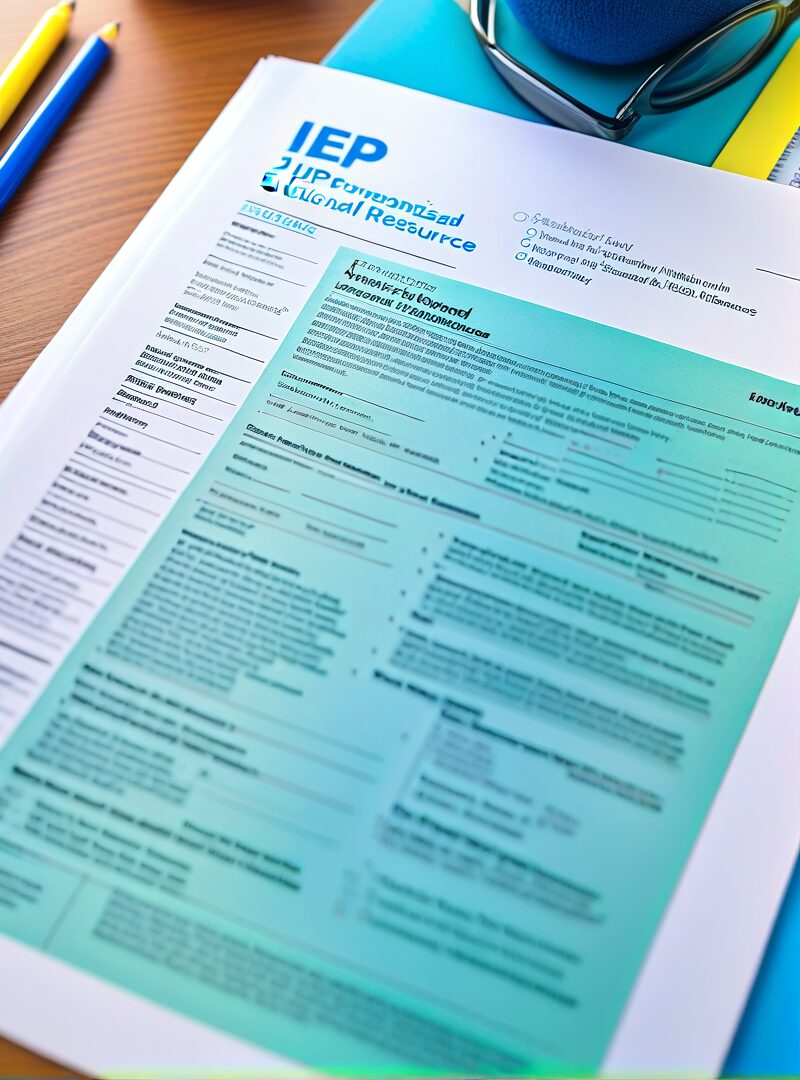Understanding the IEP for Autism
A Comprehensive Guide to Individualized Education Programs
Explore the essential elements of creating effective educational plans for children with autism, ensuring personalized support and success.
What is an IEP?
Key Features of an Autism IEP
Personalized Learning Goals
IEPs for students with autism include tailored learning objectives that align with the child’s individual strengths and challenges, promoting academic growth and personal development.
Specialized Support Services
These programs provide access to specialized services such as speech therapy, occupational therapy, and behavioral interventions to support the child’s unique needs.
Parental Involvement
Active participation of parents in the IEP process ensures that the educational strategies align with the child’s home environment, fostering a collaborative approach to learning.
Creating an Effective IEP for Autism
Step 1
Developing an Individualized Education Program (IEP) for children with autism involves a collaborative approach between educators, parents, and specialists. This ensures tailored educational strategies that address the unique needs of each child.
Step 2
Initial Assessment – Begin by evaluating the child’s current abilities and challenges through comprehensive assessments conducted by professionals.
Step 3
Goal Setting – Collaboratively set achievable goals that focus on enhancing the child’s strengths and addressing areas of improvement.
Common Questions About IEPs for Autism
Understanding the nuances of IEPs can be challenging. Here are some frequently asked questions to help clarify the process for parents and educators.
What is an IEP and why is it important for children with autism?
An IEP is a customized educational plan designed to meet the specific needs of a child with autism, ensuring they receive the appropriate support and resources to succeed academically and socially.
How often should an IEP be reviewed and updated?
IEPs should be reviewed at least annually, but more frequent reviews may be necessary to adjust goals and strategies as the child’s needs evolve.
Who is involved in creating an IEP?
The IEP team typically includes the child’s parents, teachers, special education professionals, and sometimes the child themselves, depending on their age and ability to participate.
Can parents request changes to the IEP?
Yes, parents have the right to request changes to the IEP if they feel adjustments are needed to better support their child’s educational journey.
Viewing the Individualized Education Program (IEP) for Autism: A Comprehensive Guide
Navigating the world of Individualized Education Programs (IEPs) for autism can be overwhelming. Parents and caregivers are often faced with complex jargon and unfamiliar processes. In this comprehensive guide, we break down the essential components of an IEP tailored for children with autism. From understanding the assessment process to setting measurable goals and implementing effective strategies, we provide insights to empower you in advocating for the best education for your child.
Whether you’re new to the IEP process or looking to deepen your understanding, this guide offers practical tips and resources to support your journey. By demystifying the IEP framework and highlighting key considerations specific to autism, we aim to equip you with the knowledge and confidence to collaborate effectively with educators and specialists. Join us as we delve into the intricacies of crafting a personalized education plan that prioritizes the unique needs of children on the autism spectrum.
Your Understanding the Individualized Education Program (IEP)Title Goes Here
An Individualized Education Program (IEP) is a legally binding document designed to meet the unique educational needs of a child with a disability. For children with autism, an IEP serves as a critical framework that outlines specific goals, accommodations, and services tailored to their individual strengths and challenges. The development of an IEP is mandated by the Individuals with Disabilities Education Act (IDEA), which ensures that all children with disabilities have access to a Free Appropriate Public Education (FAPE) in the least restrictive environment.
The IEP process begins with a comprehensive evaluation of the child’s educational and developmental needs. This assessment typically involves various professionals, including special education teachers, psychologists, and therapists, who work together to gather data through observations, standardized tests, and parent interviews. The information collected during this assessment forms the foundation of the IEP, informing the goals and services that will be included in the document. Understanding the purpose and significance of the IEP is essential for parents and caregivers, as it empowers them to take an active role in their child’s education.
Moreover, the IEP is not a static document; it is a living document that can and should be revised as a child’s needs evolve. Regular updates and progress reviews are essential to ensure that the IEP remains relevant and effective. As students grow and develop, their goals may change, necessitating new strategies and support services. By engaging in this ongoing process, parents and educators can work collaboratively to provide the best educational experience possible for children on the autism spectrum.



